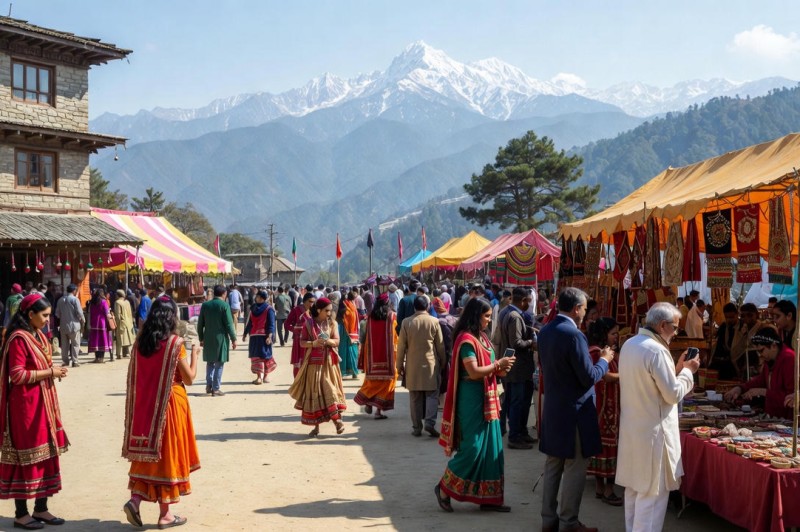

Naimisharanya is unique in itself as it is the only place other than Patal Bhuvaneshwar where 33 crore Hindu deities are believed to reside. Naimisharanya is considered the first and holiest of all pilgrimage sites of Hindus. Performing penance here for 12 years leads to direct attainment of Brahmaloka. Visiting Naimisharanya is considered equivalent to visiting all important pilgrimage sites. It is the only place which finds mention in all important Hindu scriptures.
The gods chose this place to establish Dharma, but a demon named Vrittasura was creating obstacles. They requested Sage Dadhichi to donate his bones so that a weapon could be made to destroy the demon. In the Bhagavata Purana, this place is mentioned as "Naimishe-Animish-Kshetra", the abode of Lord Vishnu. Lord Vishnu destroyed Durjaya and his group of demons here in a moment. He also destroyed Gayasur and cut his body into three pieces, one part fell at Gaya (Bihar), another at Naimisharanya and the third at Badrinath.
The name Naimisharanya is believed to have originated from Brahma's Manomaya Chakra, which fell here. "Nimisha" means "fraction of a moment" and "Nemi" means "outer part of the Chakra". The place is surrounded by a 16 km Parikrama Path, which covers all the holy places of India. It is believed that Satrupa and Swayambhuva Manu performed penance here for 23,000 years. Lord Rama performed Ashwamedha Yagna here after conquering Ravana. Ved Vyasa compiled 6 Shastras, 18 Puranas and 4 Vedas here. Pandavas and Lord Balarama also visited this place. Tulsidas composed Ramcharitmanas here.
Like ancient Indian temples, Naimisharanya too has many legends associated with it:
According to one legend, Sage Narada was in search of the holiest tirtha in the three worlds. He travelled to many holy places and finally arrived at the reservoir of Naimisharanya. The place is considered holy because the deity here was worshipped by all the gods.
According to another legend, Indra, the king of the gods, was driven out of Devalok by the demon Vritra. Vritra was immortal, but on the advice of Lord Vishnu, Indra asked Sage Dadhichi for the donation of his bones. Dadhichi expressed his wish to visit all the holy rivers before his death. Indra collected the water of all the holy rivers at Naimisharanya.
According to another legend, when the sages decided to perform penance, Lord Brahma made a ring out of darbha grass and let it fall. The place where the ring fell came to be known as Naimisharanya and it was there that sages performed penance and Lord Vishnu accepted their prayers and offerings.
According to Varaha Purana, this place was called 'Naimisharanya' because Lord Vishnu killed the demons here in a moment. According to the Puranas like Vayu, Kurma etc., the wheel of the Lord's mind had fallen here, hence it was called Naimisharanya.
Prayustasya cakrasya yatra nēmiravyaśiriyat.
Tad vanam tēna vikhyātam naimiṣaṁ munipūjitam.
Naimisharanya has been a place of religious significance since ancient times. This pilgrimage site is mentioned in the Rigveda and is considered one of the major pilgrimage sites in the Puranas. It is also mentioned in Valmiki's Ramayana and Kalidasa's Raghuvamsam. It is a spiritual center and meditation site, where people take a holy bath to wash away their sins.
This temple is located between Sitapur and Khairabad. It is 32 km from Sitapur and 42 km from Sandila railway station. This temple is located at a distance of 45 miles from Lucknow. Naimisharanya is situated on the banks of the Gomti River, one of the holiest rivers in India. The holy well "Chakra Kund" located in the temple complex is believed to be the ring of Lord Vishnu and people take a holy bath in its water.